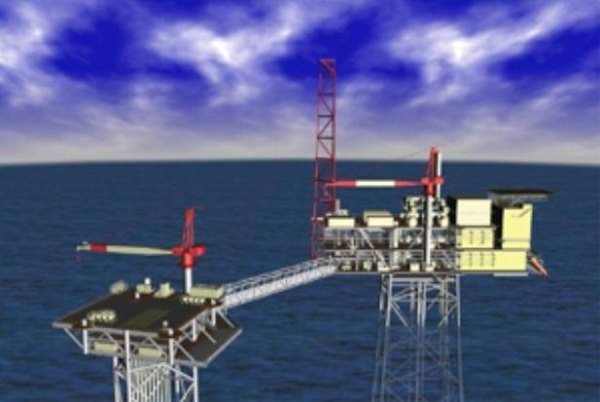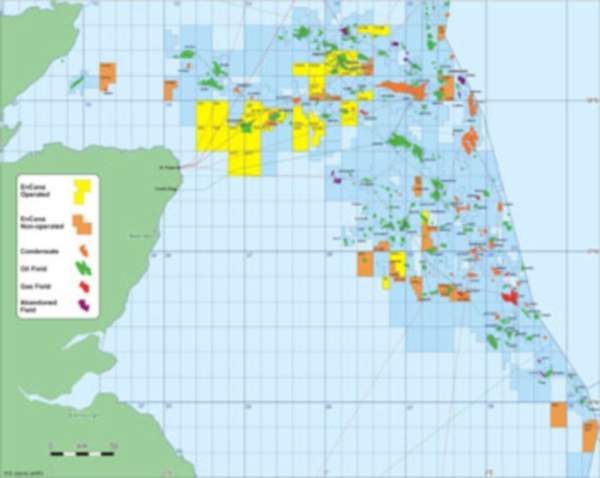Nexen Petroleum’s Golden Eagle Area Development (GEAD) project includes the development of the Golden Eagle and Peregrine (formerly Pink) fields in blocks 20/1, 20/1N and 14/26a of the North Sea, approximately 110km north-east of Aberdeen, UK. The water depth in the region is between 89m and 139m.
The GEAD project was approved by the UK Department of Energy and Climate Change in October 2011. It is being executed by the operator, Nexen, holding a 36.5% interest. Partners include Maersk Oil North Sea (31.56%), Suncor Energy (26.69%) and Edinburgh Oil and Gas (5.21%).
First production was achieved in November 2014 at the rate of 18,000 barrels of oil a day (bopd). An investment of C$3.3bn is being made in the project. The project is expected to produce at a peak rate of 70,000bopd in 2015..
Discovery of the North Sea oil fields
Golden Eagle field was discovered in 2007 and the Peregrine field in 2008. Another prospect, Hobby, was discovered in February 2009. This prospect has been defined as part of the Golden Eagle field.
Geology and reserves at Golden Eagle and Peregrine
Oil and gas at the Golden Eagle and Peregrine fields were discovered in the Burns and Punt sandstones.
Proven and probable reserves of 140 million barrels of oil equivalent are expected to be recovered from the project over a period of 18 years.
Field development of Nexen Petroleum’s Golden Eagle area development
The field contains a wellhead platform, and a production, utility and quarters (PUQ) platform, which are connected by a 70m bridge.
Nexen plans to drill 23 wells, including six water injection and 17 production wells. The ENSCO 120 jackup rig was contracted to drill the wells from the platform.
Drilling of subsea wells is carried out by a semi-submersible rig at two drilling centres (north and south).
The subsea wells are linked to a pipeline end manifold, which in turn are connected to the platform complex through umbilicals and flowlines.
Wellhead platform and production, utility and accommodation platform at GEAD
The wellhead platform measures 50m x 50m and weighs 4,000t. It is supported by a 6,000t steel piled jacket and includes 21 well slots.
The PUQ platform weighs 10,000t and measures 85m x 40m. It includes facilities for processing hydrocarbon fluids, an accommodation module and utility systems.
The topsides of the platform are supported by a four-legged jacket weighing 6,000t. The platform’s deck includes separate living quarters to accommodate 140 personnel.
Exportation of produced oil and contractors
Oil produced from the field is exported either to the Forties Pipeline System through a tie-in at the Buzzard field by a new 20km pipeline, or to the Flotta terminal through a tie-in at the Claymore field through a new 75km pipeline.
The gas is exported through a tie-in at the Ettrick field into the Scottish area gas evacuation (SAGE) pipeline by a new 16.75km pipeline.
Nexen contracted Penspen to carry out the front-end engineering and design (FEED) for the subsea development of the project.
Heerema Fabrication Group was contracted to fabricate the jackets for the wellhead and PUQ platforms. The jackets were delivered in August 2013..
A €135m contract was awarded to Technip in January 2012 to supply and install subsea infrastructure for the project, including two export flowlines, one production flowline, one umbilical and other subsea equipment.
GE Oil & Gas was contracted to provide production and control equipment. The engineering, procurement and construction contract for the accommodation module was awarded to SLP Engineering. A $150m detailed engineering design contract for the topsides of the two platforms was awarded to CB&I.
The decks of the two platforms were manufactured by Lamprell under a $200m contract. Prosafe was awarded a $74m contract to supply its Safe Caledonia vessel for accommodation support during the development of the project.
Mech-Tool supplied a laboratory module for installation on the production platform. RDS, a unit of KCA Deutag, was contracted to provide concept designs for the drilling facilities.
BMT Cordah prepared the environmental impact assessment statement. Fairstar Heavy Transport was assigned by Saipem to provide transportation services.





